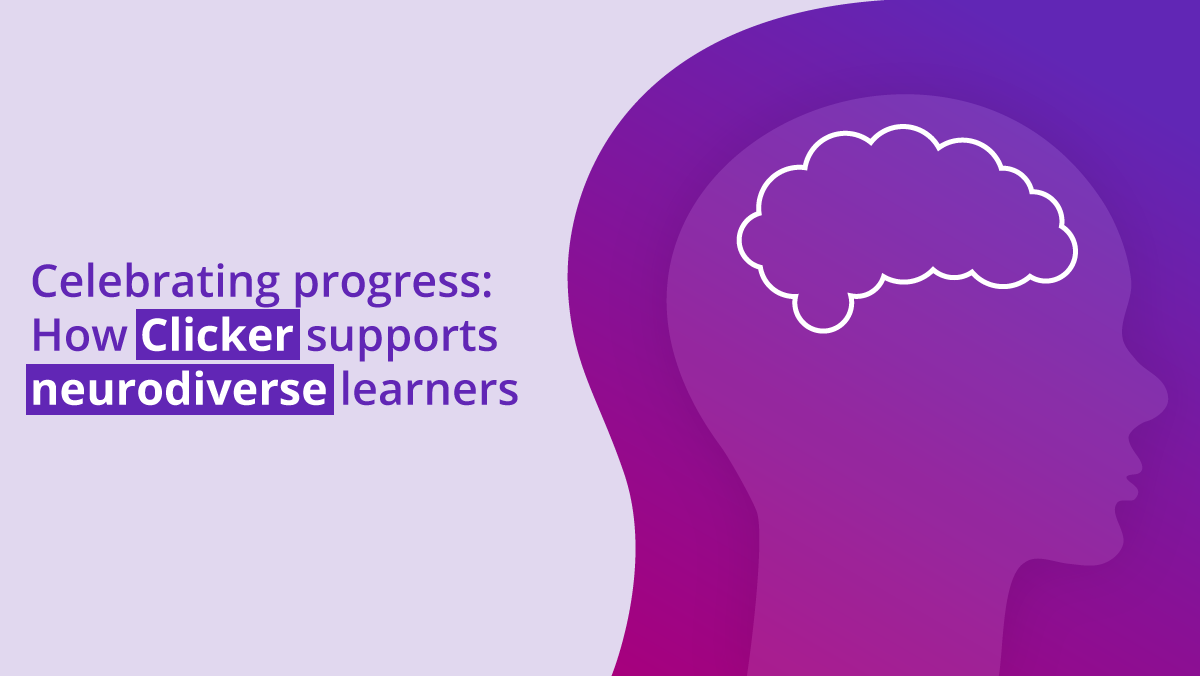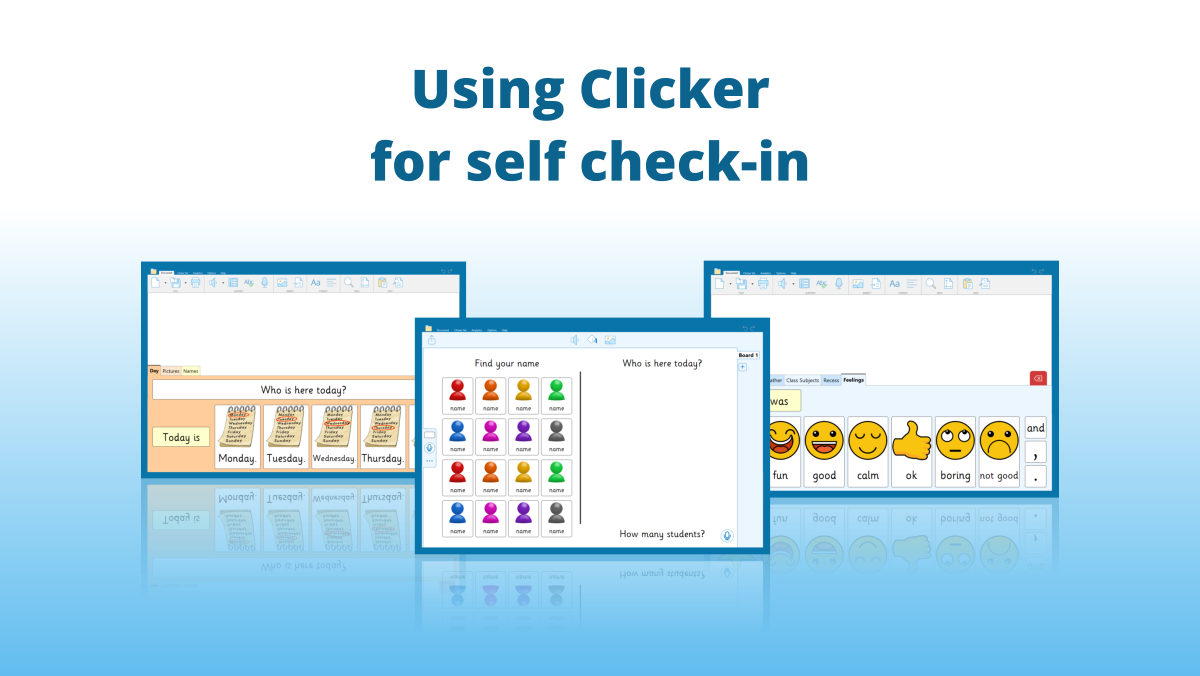Beth Poss is an educational and technology consultant, accessibility and inclusion advocate, speech/language pathologist, and a big fan of Clicker! Beth is passionate about designing educational environments that support all students in accessing a rigorous curriculum and meeting educational outcomes.
In this guest post, Beth explores how educators can meaningfully assess student progress while ensuring all learners have the choice to demonstrate their understanding in the way that best suits their needs and interests.
"How do I grade my students if they are not all doing the same thing without making multiple grading rubrics? I just cannot add one more thing to my plate!"
This is a common concern from overworked educators when it comes to providing student choice when demonstrating attainment of learning outcomes. And rightfully, no educator wants to add more complexity to their paperwork! However, adding learner choice does not need to mean adding more work for educators.
Choice is a critical component of Universal Design for Learning (UDL): choice of how to gain and sustain attention, choice of how to receive information, and choice of how to demonstrate attainment of learning outcomes. So how do we overcome the stumbling block of grading learning when not every learner is doing the exact same task in the exact same way? The key to providing choice, but not making grading more difficult, is twofold:
- Construct assignment rubrics that are standards based and open ended in terms of the learning product, rather than activity based with criteria focused on a specific end product. As many school districts employ standards-based grading practices anyway, this is right in line with grading policies. This allows educators to evaluate the learning and not the work.
- Consistently provide meaningful selections for action and expression from learners, allowing for familiar but not restrictive options that empower learners to choose what will be meaningful and engaging to them.
So, what does a standards-based grading rubric look like? Let’s first discuss what it does not look like. It is easy to fall into the trap of mandating every detail of an assignment, from the number of words to the use of illustrations. My daughter once had a rubric that required hand-drawn images for a social studies assignment, which had nothing to do with her measuring her understanding of the cultural contributions of the Ancient Greeks.
Take this rubric for a math assignment on tessellations. The criteria stresses a hand created, full color design on 11x14 white paper, including measuring the “engagement” of the learner. While the rubric is analytic and provides the learner with feedback on different components of the assignment, none of these components reflects attainment of an understanding of a tessellation! It instead narrowly defines the only acceptable way that an assignment can be completed, eliminating much choice by the learner and likely contributing to a complete lack of engagement for a learning activity that does not in any way empower the learners.
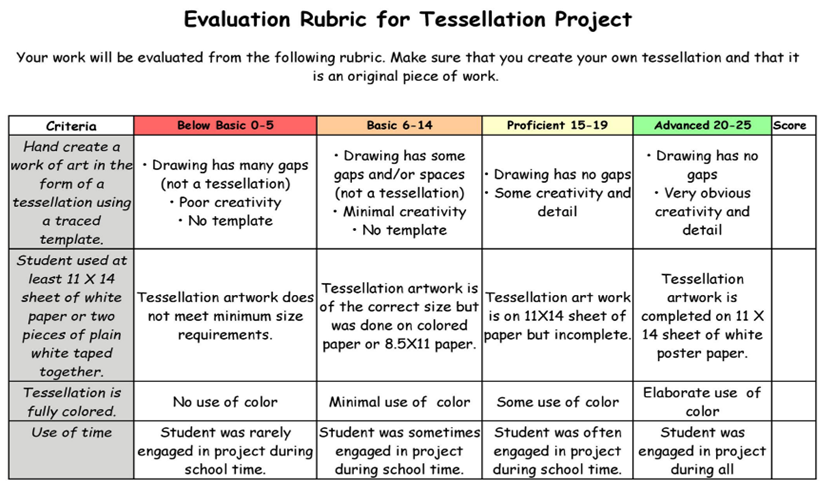
When educators instead develop a rubric that is based on the standards-based learning outcomes, rather than the specific task that the learner needs to complete, it is much easier to give the learner a choice of products to demonstrate their learning. Let’s take for example this single point rubric I’ve made within Clicker (this can also serve as a graphic organizer) for writing a personal narrative:
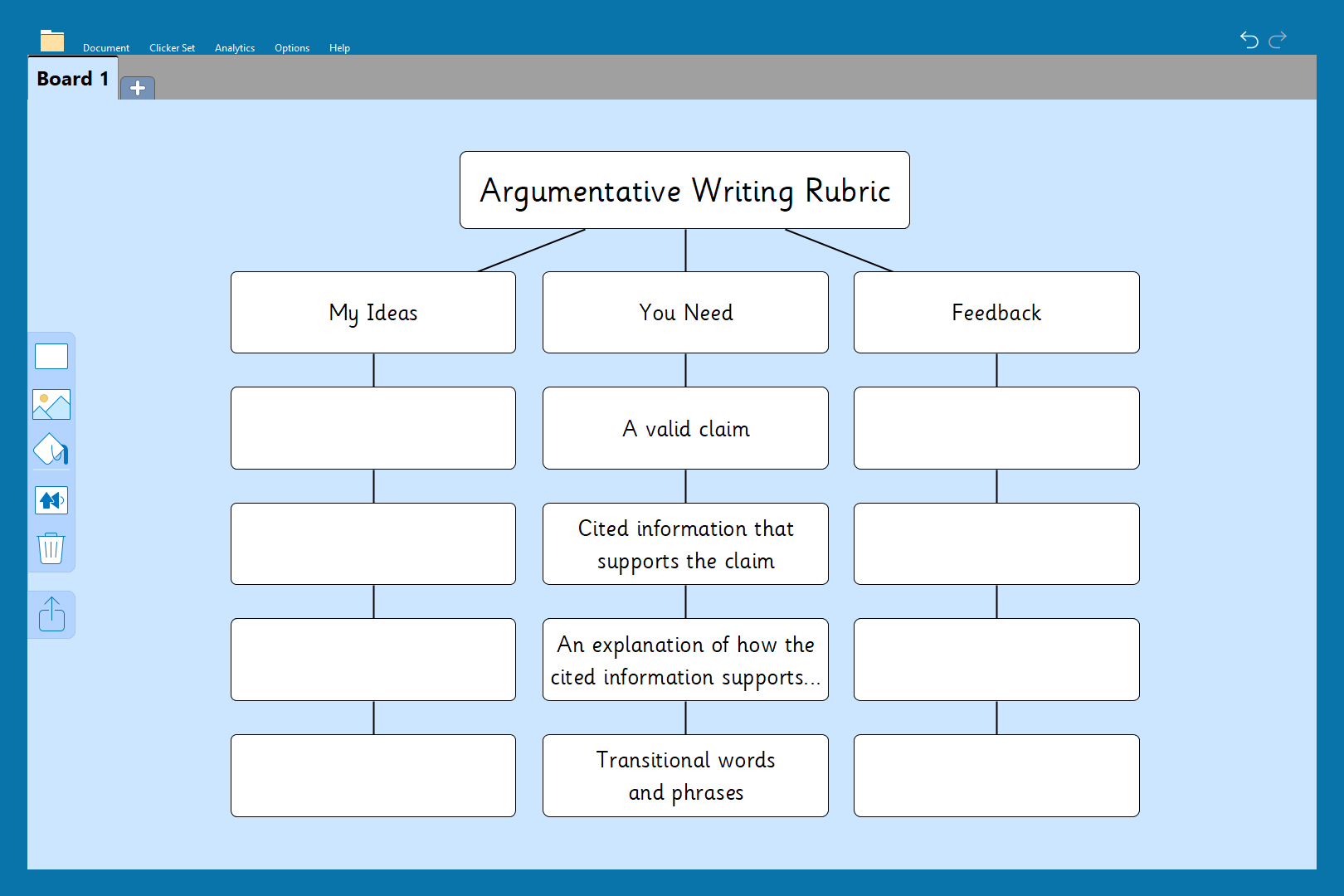
It is simple, clear and does not dictate the way that the student should complete the assignment.
“But wait!” you say. “My learners cannot handle such open-ended assignments. They need more structure as to what might demonstrate attainment of the learning outcomes.” Many learners do need guidance as to what a learning project might look like, and taking a UDL approach to grading does not mean eliminating this support.
Something to consider is the 3 + One More approach. This entails offering three suggestions for projects consistently across the school year, with the 4th option being to come to the teacher and talk about another idea they might have. It can look like this:
Choose one of the following options for your Argumentative Writing project. Check the rubric for elements that make an excellent argumentative writing piece.
- Using any writing tool that you choose, write a multi paragraph essay that presents a point of view supported by data. Some tools you might want to consider are Clicker, Word, or Google Docs.
- Using any presentation tool that you choose, create a slideshow with pictures, text and/or multimedia that presents a point of view supported by data. Some tools you might want to consider are Google Slides or Clicker Books.
- Using any audio or video tool that you choose, record a podcast or videocast that presents a point of view supported by data. This could be done using a Clicker Talk Set.
- Inspired to do something else to present your argument supported by data? Come and see me to talk about some possibilities!
You could even incorporate a Choice Board into your assignment to further support learners in seeing the different ways that an assignment can be completed.
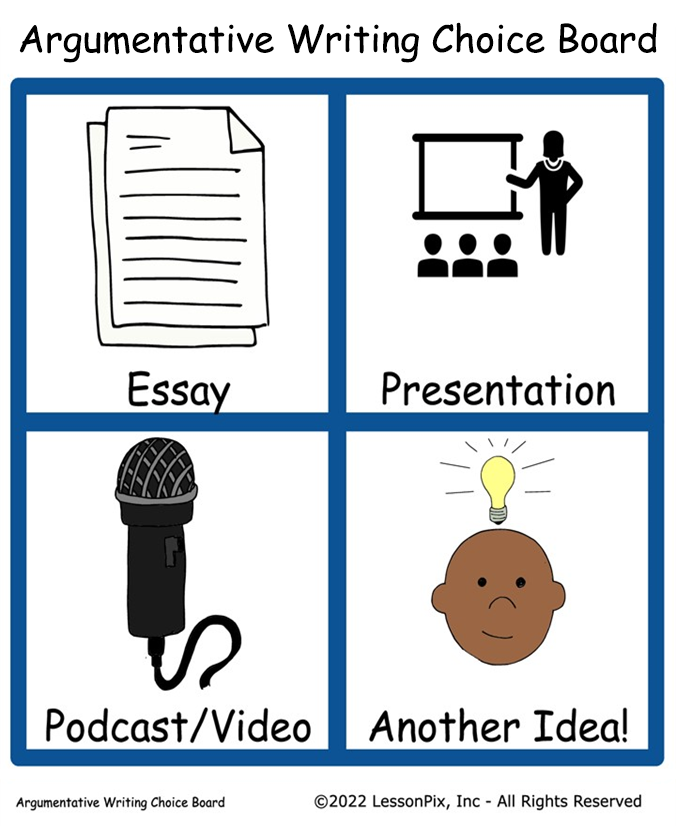
When rubrics based on learning outcomes along with choice of familiar options for completing the assignment become a routine part of the assessment process, learners and educators benefit.
Like Beth, the team at Crick Software are passionate about ensuring that all learners are given the support they need to succeed, in whatever form works best for them. With the right tools, every student can achieve their potential.
If you’d like to find out how our literacy software will empower and engage learners across your school or district, start the conversation with a free 15-minute consultation with a Crick Education Consultant.


